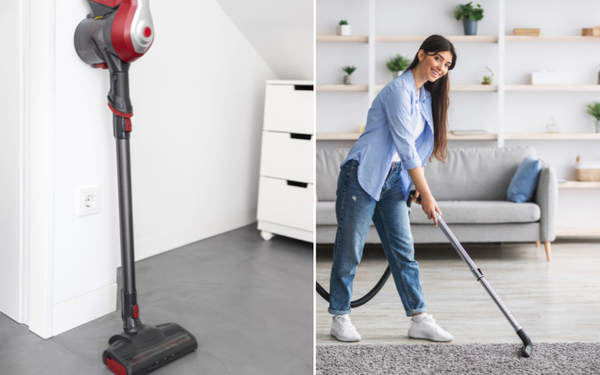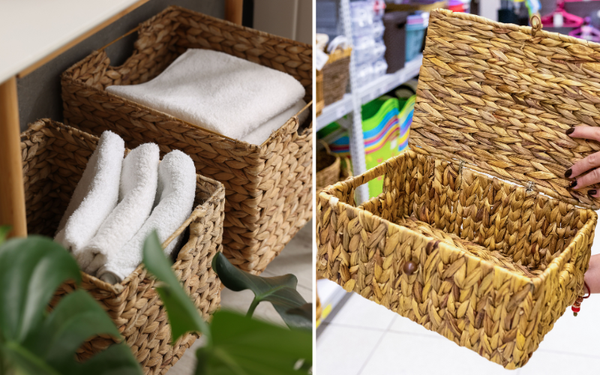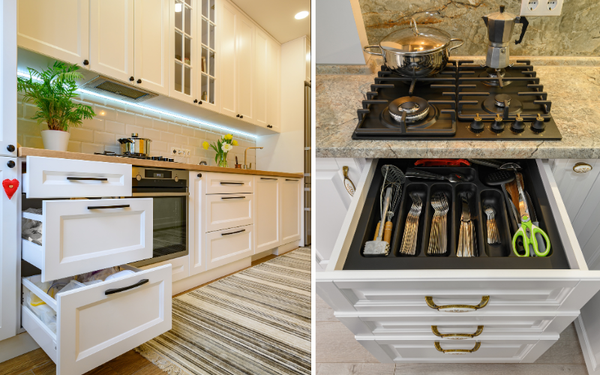If you’re eager to know “how do I scent my HVAC system?”, this guide provides a straightforward approach to fill your home with fragrant air. Learn about choosing the right scents and the installation process to create a welcoming atmosphere effortlessly.
Key Takeaways
- HVAC scenting is an energy-efficient method that uniformly spreads aromas throughout the home using essential oils or synthetic fragrances, providing a constant and enveloping scent experience.
- There are various methods to integrate scent into your HVAC system, including scented furnace filters, applying essential oils to air filters, or installing advanced nebulizing diffusers, each with different maintenance levels.
- Considerations for HVAC scenting include maintaining air quality with regular system maintenance, energy efficiency and cost implications of scent diffusing devices, and ensuring the safety of fragrances for individuals with allergies.
Understanding HVAC Scenting Basics
The aroma of freshly baked cookies, the zest of citrus groves, the serene touch of lavender fields – these can all be part of your daily home experience with the magic of HVAC scenting. This innovative approach takes advantage of your existing air system to envelope your space in your chosen fragrances. But why choose an HVAC scent system over traditional methods? For starters, it’s a safe, energy-efficient way to add pleasant aromas throughout your entire home, and it transforms your space into a more positive environment for work or relaxation.
Moreover, with the assurance that the oils used are generally non-toxic and free of harmful chemicals, you can relax and breathe easy, quite literally.
What is HVAC Scenting?

Diving into the specifics, an HVAC scent diffuser is a device that disperses scented air throughout your living spaces by integrating with your air ducts. These modern marvels come in several types:
- Fan-based diffusers gently distribute fragrances using a fan
- Evaporative diffusers blow air through a pad saturated with essential oils
- Nebulizing diffusers use cold air diffusion technology to break down oils into a fine mist
These systems offer a sophisticated alternative to the hit-and-miss approach of room sprays or the localized effect of candles, providing a consistent and enveloping scent experience.
The Advantages of Using Your HVAC for Scenting
The superiority of HVAC scenting lies in its ability to:
- Uniformly spread your chosen aroma throughout every corner of your home
- Ensure every room is touched by the gentle caress of your preferred scent
- Create a more inviting atmosphere
- Tailor the fragrance release with higher settings to maintain a persistent olfactory backdrop, perfect for larger areas
Unlike standalone diffusers or scented candles that often leave some areas more fragrant than others, your HVAC system ensures consistent and controlled fragrance distribution.
The result? A home that smells as good as it feels in every nook and cranny, creating a universally pleasant aromatic experience.
Selecting the Ideal Scents for Your Home
Your home is a reflection of your personality, and the scents you choose should be no different. Whether you prefer the natural allure of essential oils or the enduring fragrance of synthetic options, the key is to select a scent that resonates with you and your space.
Imagine the warmth of a living room enhanced by notes of Atlas cedar or the refreshing ambiance of Siberian fir in your hallway. Even the kitchen, a hotspot for a variety of odors, can be transformed with the right scent pairing, like zesty lemon oil with peppermint for a clean, invigorating feel. In your home office, the choice is equally strategic: lavender to soothe the mind and peppermint to invigorate it.
Exploring Essential Oils vs. Synthetic Fragrances

The debate between essential oils and synthetic fragrances is akin to choosing between a hand-painted masterpiece and a high-definition print – both have their merits. Essential oils are the essence of nature, extracted directly from plants and offering not just scent but also therapeutic benefits. However, they can be fleeting, evaporating more quickly than their synthetic counterparts, which boast longevity and a consistent aroma over time. When using your HVAC system for scenting, this is a crucial consideration as it influences the intensity and duration of the fragrance in your home.
While synthetic fragrances are widely used for their robust scent profiles, essential oils, including a specific essential oil, are often favored for their natural qualities and lack of chemicals.
Scent Pairing and Seasonal Choices
As seasons change, so can the scents in your home. Custom scent combinations, using either essential oils or synthetic fragrances, can evoke particular moods or complement the time of year. Imagine the cozy embrace of Asian rosewood and true lavender in your bedroom during the chilly months, or the refreshing tingle of cypress and eucalyptus as spring unfurls.
The art of blending scents is a personal journey, allowing you to adjust your home’s atmosphere to match your specific preferences. Whether it’s a single note or a complex symphony of aromas, the right blend can turn your house into a sanctuary for the senses.
Integrating Scent into Your HVAC System
Now that you’ve picked your potion, how do you weave it into the very fabric of your home? Integrating scent into your HVAC system can be as simple as selecting a scented furnace filter or as advanced as installing a nebulizing diffuser. The placement of your diffuser is key to achieving an optimal scent spread, and while noise levels are a consideration, they can often be mitigated by the choice of surface on which the diffuser sits.
Remember, the goal is to mask unpleasant odors and create an inviting atmosphere without the need for aerosols or candles, which can be inefficient and inconsistent in properly ventilating through vents.
Using Scented Furnace Filters

Scented furnace filters are the set-it-and-forget-it solution for busy homeowners looking to infuse their homes with fragrance. These filters, designed for compatibility with your HVAC system, can be installed with ease, and once in place, they’ll do the heavy lifting, providing a steady diffusion of scent for about a month, [3.1_2]].
As air circulates through your HVAC system, it carries the fragrance from the filter into every room, ensuring your whole home benefits from the pleasant aroma.
Adding Drops to Air Filters
For the DIY enthusiasts, creating a homemade scented air filter is a straightforward affair. Here’s how you can do it:
- Begin with a clean air filter.
- Artfully apply 15 to 20 drops of your chosen essential oils, spreading them evenly to avoid concentration in any one area.
- This method aligns perfectly with the monthly filter replacement schedule, as the lifespan of the scent usually dovetails with the filter’s effective period.
It’s a simple way to add a personal touch to your home’s scenting strategy.
Installing HVAC Scent Diffusers

For those seeking a more sophisticated scenting solution, nebulizing HVAC scent diffusers are the pinnacle of aromatic technology. These devices, also known as HVAC diffusers, are an investment, with prices varying based on the size of the area they’re designed to cover – from cozy apartments to sprawling villas. Like any piece of machinery, they require regular maintenance, such as cleaning and filter replacement, to ensure their longevity and the integrity of the scent they distribute.
Optimizing Your HVAC Scenting Experience
Having introduced scent into your home’s airways, the next step is fine-tuning the experience to suit your preferences and maintaining the quality of your indoor air. Adjustable controls on your HVAC scent diffuser give you the power to dial the intensity up or down, creating the perfect sensory ambiance.
Cleaning your diffuser every few months is essential to keep it functioning at its best and to ensure the fragrance circulating through your home remains pure and pleasing, [4_2]], [4_3]].
Controlling Scent Intensity
The secret to controlling scent intensity lies in the art of subtlety. Starting on a lower setting allows you to gently introduce the fragrance to your home without overwhelming your senses. It’s a process of discovery – increase the intensity gradually and give the scent time to fully permeate your space before making further adjustments, [4.1_2]]. This way, you find that sweet spot where the fragrance complements rather than dominates.
Maintaining Air Quality
But what about the air you breathe? Ensuring the air quality in your home remains high is a top priority, and regular maintenance of your HVAC scenting system plays a crucial role in this. A clogged diffuser not only impairs the distribution of scent but can also affect the freshness of your air.
Simple cleaning cycles with rubbing alcohol can prevent the build-up of oil particles that lead to such issues. Additionally, keeping spare parts handy makes regular maintenance a breeze, guaranteeing your system continues to refresh your space without interruption.
Additional Considerations for HVAC Scenting
As with any aspect of home improvement, there are additional factors to consider when scenting your HVAC system. These include the implications for energy efficiency, the costs involved, and the safety of the products you’re using.
Let’s delve into how scenting can align with energy-saving practices and what to keep in mind to ensure a secure and enjoyable scenting experience.
Energy Efficiency and Cost Implications
In the quest for a fragrant abode, energy efficiency shouldn’t be overlooked. The good news is, modern HVAC scent diffusers come with features designed to optimize energy use. Whether it’s a battery-operated model that cuts down on electrical consumption or a WiFi-connected device that allows for precise energy management via your smartphone, [5.1_3]], there’s an option to suit your sustainability goals.
Furthermore, advancements in HVAC technology mean that newer systems are far more energy-efficient than their predecessors, presenting an opportunity for significant cost savings, [5.1_5]]. For businesses, the strategic use of scent can even translate to increased revenue and customer satisfaction, [5.1_8]].
Safety and Allergy Considerations
The allure of a beautifully scented home should never come at the cost of health and safety. It’s important to be aware that some HVAC air fresheners contain chemicals like VOCs and phthalates, which can be problematic for those with allergies or sensitivities. In fact, exposure to these substances has been linked to a range of health issues, affecting a significant portion of the population.
Choosing high-quality fragrance oils and ensuring your HVAC scenting system is equipped with automatic features can lessen the risk of overexposure and keep your indoor environment safe and enjoyable for everyone, [5.2_3]], [5.2_4]].
Summary
From the calming embrace of lavender to the invigorating zest of citrus, scent has the power to transform a house into a home. This guide has taken you through the basics of HVAC scenting, from the types of diffusers available to the benefits of using your HVAC system to distribute your favorite fragrances. We’ve explored the world of essential oils and synthetic fragrances, delved into the art of scent pairing, and discussed how to integrate scent into your home’s airways. By considering additional factors like energy efficiency and safety, you’re now equipped to create a fresh, inviting atmosphere that not only appeals to your sense of smell but also supports your well-being. Let your home’s scent be a signature – a reflection of your personality and a welcome message to all who enter.
Frequently Asked Questions
What are the benefits of using an HVAC scenting system over other methods like candles or room sprays?
An HVAC scenting system offers consistent and even distribution of fragrance throughout your entire home, compared to candles or room sprays, and is generally safer with adjustable settings and non-toxic oils.
Can I use any type of essential oil or fragrance with my HVAC scent diffuser?
Yes, you can use essential oils and synthetic fragrances with your HVAC scent diffuser, but it's crucial to select ones that are compatible with your system to prevent damage.
How often should I clean my HVAC scent diffuser, and how do I do it?
You should clean your HVAC scent diffuser once every few months by using rubbing alcohol in an empty fragrance bottle and running the system for 15-20 minutes. After cleaning with alcohol, rinse the bottle thoroughly to prevent residual alcohol from affecting the next batch of scent oil.
Will integrating scent into my HVAC system affect my energy bills?
Yes, integrating scent into your HVAC system can affect your energy bills. Modern HVAC scent diffusers often come with energy-saving features to prevent excessive use of your HVAC system and newer high-performance equipment can result in energy savings, helping offset any additional costs associated with scenting your home.
What should I consider regarding allergies when choosing scents for my HVAC system?
When choosing scents for your HVAC system, consider the possibility of allergies and opt for high-quality oils or fragrances free from harmful chemicals. Keep your HVAC scenting system clean and well-maintained to minimize allergen exposure.
You Might Also Like...










